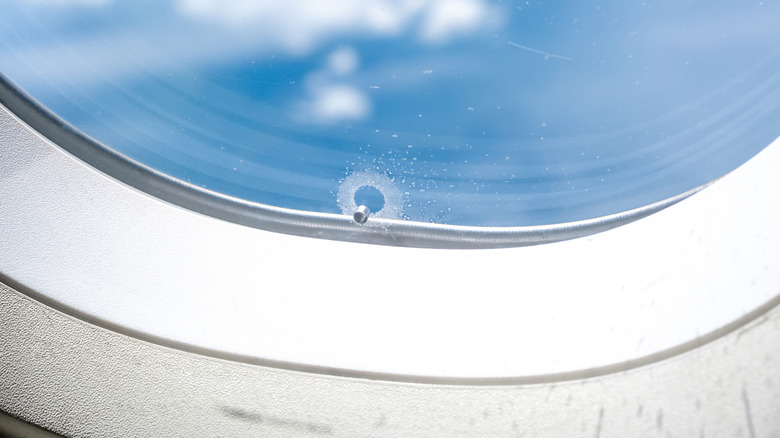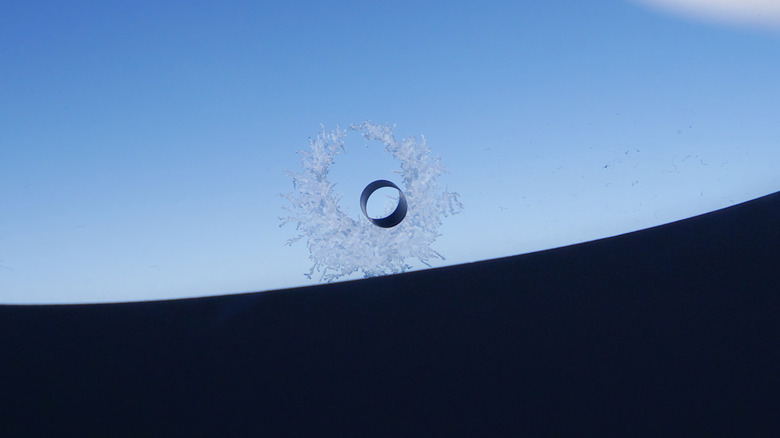The Unexpected Reason Airplane Windows Have Those Tiny Holes
We've all been on flights and seen the little dot at the bottom of the window pane. It's just one of those things that we all notice and acknowledge but don't necessarily understand — much like the percentage chance of rain we see on our weather forecasts which doesn't mean what we think it does. But it turns out this miniscule feature of airplane engineering serves an extremely important purpose — regulating pressure.
Rather than glass, plane windows are typically made out of three layers of acrylic. The outer layer is structural, and aside from providing a seal between the interior and exterior of the plane, is designed to withstand the pressure changes induced by maintaining a higher pressure inside the cabin. The rest of the window comprises an inner layer that acts as a fail-safe for the outer one, and an interior layer or "scratch pane" that isn't structural and merely protects the middle layer from scratches, dirt, and damage. All these layers are separated by air gaps, with the outer layer taking the weight of the pressure from within the cabin.
But as strong as this outer layer is designed to be, suddenly hitting it with significantly altered pressure from the inside while the air pressure outside falls is a recipe for disaster. This is where the "bleed hole" or "breather hole" comes in. The middle pane is the layer with the hole in the bottom, which allows for the pressure to gradually filter through to the outer pane rather than hitting it all at once. In other words, the rate of air pressure loading becomes gradual rather than sudden, allowing that outer panel to take the brunt of the pressure without being damaged in the process.
Bleed holes serve more than one purpose
A consulting engineer at Engineering Design & Testing Corp explained the purpose of the bleed hole to Reader's Digest by way of analogy: "There is much less of an effect on the object if the hammer is laid on the object rather than dropped. In the same way, the window holes expose the structural glazings to gradual pressure changes, thus reducing the loading effect over time." That's probably the easiest way to think about how the bleed holes help. But they also ensure an equilibrium of pressure in the air gaps between the three layers, without which the panes would endure significant stress which could lead to damage.
This is especially important when it comes to rapid descents. In the event the cabin loses pressure pilots are required to make quick descents in order to bring the plane under 10,000 feet where passengers will be able to breathe without requiring masks. Without a bleed hole in the windows, this type of rapid change in pressure could easily lead to the panes cracking or breaking entirely.
It's odd to think that the tiny hole you've seen in airplane windows serves such an important purpose. But beyond ensuring the windows don't just blow out due to pressure changes, the bleed hole also serves a slightly less important purpose. If the space between the three panes was entirely sealed moisture would have nowhere to go and therefore build up, causing the panes to become covered in condensation. Thanks to the bleed hole, this doesn't happen, and we're able to see out of the plane windows without any obstructions.

